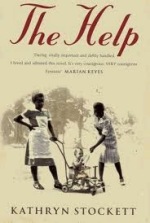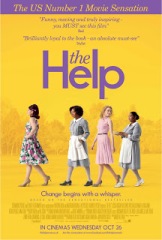‘Anthem for Doomed Youth’ by Wilfred Owen is a lyric poem which is written for the young soldiers who were slaughtered during the war. This poem is written in the format of the sonnet, however Owen deliberately misused the sonnet this highlights the fact that he is angry and resenting against the idea of the lack of Christian funerals that these soldiers are getting. Owen uses ABABCDCDEFFEGG as his rhyme scheme which combines both the rhyme scheme of the Petrarchen and Elizabethan sonnet to enhance his effect, he also includes half rhyme and full rhyme. There is an octet (8 lines) and a sestet (6 lines). The octet is dominated by the sound of battle; the sestet is characterised by muted grief.
Firstly, the title of the poem “Anthem for Doomed Youth” gives the reader the impression that the poem is almost a musical anthem due to “Anthem” being included within the title. However, the poet lures the reader into a battlefield where we almost hear the sounds of war (the alliteration sounding like guns) as opposed to the music of a funeral or memorial service. Owen includes a typical technique of his in the title, assonance, “doomed youth” he repeats the vowel sound which gives the title an ominous tone and also reiterating that the youth are doomed.
This poem opens with a question which he later answers throughout the poem: “What passing bells for these who die as cattle?” This question asks what sign/signal will be sounded to mark the deaths of the soldiers. By comparing the soldiers to “cattle” leaves connotations of slaughter – he is appalled and hurt by the inhumane deaths these soldiers are facing as they are not getting the traditional “passing-bells”.
He moves on to stating what these soldiers get instead of a “passing-bell”: “Only the monstrous anger of the guns. / Only the stuttering rifles’ rapid rattle / Can patter out their hasty orisons.” The “anger of the guns” highlights the anger of the soldier being transferred to the weapons which creates a metaphorical approach that personifies the weapons as being monstrously angry. Furthermore, in the last two lines alliteration and onomatopoeia (two techniques which Owen uses a lot in his poetry) are used to create the effect of the guns being harsh and repetitive. For example the ‘t’ sound: “stuttering”, “rattle” and “patter”. Also the ‘r’ sound: “rifles’ rapid rattle”. This is saying that the personified guns are killing these men, this answers Owen’s question at the very start of the poem instead of the sounds of bells these soldiers are only having the sounds of sudden, harsh and repetitive bullets.
Owen moves on to write: “No mockeries now for them; no prayers or bells: / Nor any voice of mourning save the choirs – / The shrill demented choirs of wailing shells: / And bugles calling for them from sad shires.” Here Owen juxtaposes the choirs and wailing shells which combines two opposing worlds together. The repetition of “No”, “no” and “nor” makes it direct and simple emphasising what these soldiers do not have. Owen describes the shells as “wailing” which shows them in pain, crying and lamenting; this is onomatopoeia. Moreover, the lack of religious response to the deaths of the soldiers is referenced as they view their bells and funerals as nothing but “mockeries”.
In his second part of the poem he begins with another question as he has previously answered the latter: “What candles may be held to speed them all? / Not in the hands of boys but in their eyes / Shall shine the holy glimmers of goodbyes.” This indicates a shift in the focus of the poem (also the rhyme scheme). Owen uses the burning light of the candles as a metaphor for their lives; instead of the candles being used to send them to the afterlife the soldiers now only have the last flicker of light in each other’s eyes which “Shall shine the holy glimmers of goodbyes.”
In the final three lines Owen reflects upon the grieving: “The pallor of girls’ brows shall be their pall; / Their flowers the tenderness of patient minds, / And each slow dusk a drawing down of blinds.” He reflects upon what the soldiers shall miss out on – no pall/sheet/flag/flowers on their coffin and perhaps not even a proper burial, instead grief of girls and families at home. However, in the final line there is alliteration “And each slow dusk a drawing down of blinds.” The alliteration almost evokes an atmosphere of dull stillness. The final line symbolises the families at home who will draw their blinds after the death of their loved one and also a metaphorical approach of the blinds being drawn on the soldiers lives.
Overall, the poem communicates both sorrow and horror which both himself and others experienced during war. Young men who should have lived died in the chaos of battle which includes his common theme of ‘wasted youth’; those who lost dear ones were not present at the deaths or burials. Unfortunately, replacing usual funeral rites was the sounds of battle and distant grief to mark their deaths. Throughout the poem, Owen incorporated the imagery to evoke the sorrow and horror of war. He compares a respectful funeral to the harsh reality of the fatality in war and by questioning religious approaches to provide comfort in the face of such a harsh reality.
Meanings:
- Passing-bells: A tradition in England which dates back many centuries is to ring a bell when a person was dying. Those who heard it would pray that this person’s soul would pass to the light of heaven when he/she died. Today, churches continue this tradition at funerals.
- Patter out: Mumble or sing out.
- Orisons: Prayers/Funeral songs.
- Mockeries: No insincere funeral rites.
- Bugles: A brass instrument like a small trumpet, typically without valves or keys and used for military signals.
- Pallor: (paleness) on the faces of girls.
- Pall: The cloth, usually black, covering the coffin at a funeral.
- Drawing-down of blinds: This phrase allows the reader to vision some of the suffering which the loved ones feel after the burial of a soldier.



